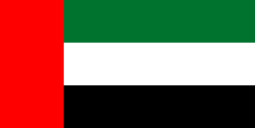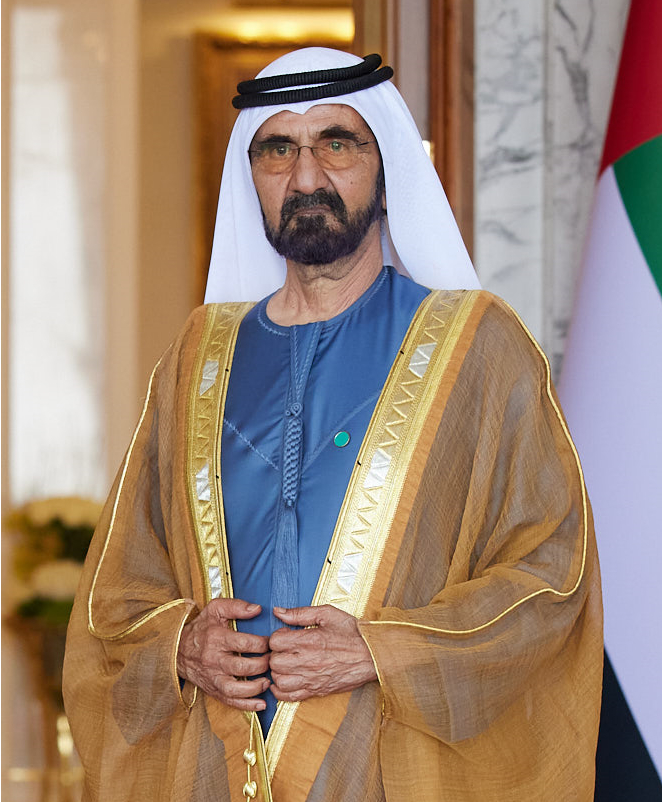County Name: United Arab Emirates
Flag:

The history of the United Arab Emirates (UAE) is shaped by extensive trade, cultural exchanges, and regional connections. In ancient times, the region played a vital role as a trade hub linking Mesopotamia and the Indus Valley civilization. Over time, nomadic herders and fishermen settled in the area, adopting livelihoods focused on fishing, pearling, and agriculture. The region saw the influence of various civilizations such as the Sumerians, Akkadians, Persians, and Romans, who established trading posts along the Arabian Gulf. In the 7th century CE, Islam spread throughout the Arabian Peninsula, bringing about a significant cultural transformation. By the 9th century, towns like Julfar (now Ras Al Khaimah) prospered as key trading centers under the Abbasid Caliphate.
The modern history of the UAE began to take shape in the 19th and 20th centuries with the arrival of European powers seeking control of the region’s trade routes. The coastal sheikhdoms entered into treaties with the British Empire, leading to the establishment of the Trucial States. These agreements laid the groundwork for eventual independence, and in 1971, six emirates—Abu Dhabi, Dubai, Sharjah, Ajman, Umm Al-Quwain, and Fujairah—formed the United Arab Emirates. Ras Al Khaimah joined the federation the following year. The discovery of oil in the 1950s transformed the UAE’s economy, fueling rapid modernization and infrastructure development. Today, the UAE is globally recognized for its dynamic economy, cutting-edge architecture, and ambitious vision for the future, while also cherishing its rich cultural heritage and traditions deeply rooted in the Islamic faith.
Abu Dhabi
(GMT+4)
Position in world: 114th
Total Area:83 600 square kilometres
Arable Land: 0.71%
Desert Extremes: The United Arab Emirates (UAE) endures a consistently arid desert climate. Scorching hot summers push temperatures beyond 40°C (104°F), while winters offer milder, warm conditions, ranging from 15°C to 25°C (59°F to 77°F).
Brief Winter Rains: Rainfall is scarce and irregular, mostly arriving in short winter bursts.
Sandstorm Season: Sandstorms are frequent, especially in the intense summer heat, adding to the UAE’s dry, arid landscape throughout the year.
The United Arab Emirates (UAE) is divided into seven emirates, each functioning as a province with its own local government and ruler. These emirates are:
Flooding Fury: Sudden, intense rainstorms can lead to flash flooding, especially in urban areas with limited drainage infrastructure, such as Dubai and Abu Dhabi.
Drought’s Grip: Arid desert conditions make the UAE highly susceptible to drought, straining water resources and impacting agriculture and freshwater supply.
Sandstorm Surge: Frequent sandstorms, especially in the spring and summer, reduce visibility, impact air quality, and can disrupt daily life and transportation.
Earthquake Shakes: While rare, the UAE is occasionally impacted by tremors due to its proximity to fault lines in Iran, posing potential risks to structures and infrastructure.
Heatwave Hazard: Extreme temperatures during summer months push the limits of public health and infrastructure, with heatwaves posing a severe risk to outdoor workers and vulnerable populations.
The United Arab Emirates (UAE) maintains several maritime claims that reflect its strategic location along the Persian Gulf and the Gulf of Oman. It claims a 12-nautical-mile territorial sea, extending its sovereignty to waters crucial for security and navigation. Beyond this, the UAE has established a 24-nautical-mile contiguous zone, where it can enforce customs, immigration, and sanitation laws. The UAE also claims an exclusive economic zone (EEZ) of 200 nautical miles, granting it rights over natural resources in the waters, seabed, and subsoil, including oil and gas reserves. However, the UAE’s maritime boundaries overlap with those of neighbouring states, such as Iran and Saudi Arabia, which has led to ongoing negotiations and disputes, especially regarding islands in the Gulf. These claims are vital for the UAE’s economy, security, and resource management, given its reliance on maritime trade and offshore energy resources.
Power Structure: The UAE is a federal absolute monarchy made up of seven emirates, each governed by its own ruler. The president, traditionally the ruler of Abu Dhabi, holds the highest office in the nation, while the vice president and prime minister, usually the ruler of Dubai, oversee executive functions. This leadership structure emphasises hereditary rule, with the Federal Supreme Council, comprising the rulers of each emirate, making key decisions collectively.
Consensus Governance: The UAE’s political system prioritises unity and stability, with rulers working together to maintain a cohesive governing front. National decisions often require agreement among the emirate rulers, balancing autonomy with federal cohesion. Although political parties are not permitted, the UAE has a Federal National Council (FNC), a consultative body that includes members appointed by the rulers and indirectly elected representatives.
Development-Driven Policy: The UAE’s governance is largely defined by its focus on economic diversification and modernization. The leadership prioritises visionary projects and infrastructure development, with ambitious plans such as the UAE Vision 2021 and the more recent UAE Centennial 2071, aiming to establish the country as a global hub for trade, tourism, and innovation.
Social Contract and Stability: Political stability in the UAE is underpinned by a social contract that emphasises economic prosperity, security, and gradual reform over direct democratic participation. In return for stability and growth, citizens and residents generally align with the leadership’s vision, contributing to the country’s reputation as one of the most politically stable in the region.
Allies
The UAE maintains strong ties with Western countries, particularly the United States and European nations, and is a member of the Gulf Cooperation Council (GCC), which includes Bahrain, Kuwait, Oman, Qatar, and Saudi Arabia. The GCC serves as a platform for regional cooperation on security, economic, and political matters, especially in response to perceived threats from Iran and other regional actors. The UAE has also engaged in strategic partnerships with countries like India and China, focusing on trade, investment, and technology exchange.
United States: The UAE maintains a close strategic partnership with the U.S., characterised by military cooperation, defence agreements, and economic ties. The U.S. has provided significant military support to the UAE, including arms sales and joint military exercises, positioning the UAE as a key ally in the region.
Saudi Arabia: As a fellow member of the Gulf Cooperation Council (GCC), Saudi Arabia is one of the UAE’s closest allies. Both countries collaborate on security matters, particularly concerning regional threats from Iran and extremism. They have also partnered in military operations, such as the Saudi-led coalition in Yemen.
United Kingdom: The UAE has strong diplomatic and economic ties with the UK, reflected in significant investments and trade relations. The two nations cooperate on various issues, including defence, counterterrorism, and cultural exchanges.
France: The UAE and France share a robust partnership, with cooperation in defence, trade, and cultural initiatives. France has been a key supplier of military equipment to the UAE and has participated in joint military exercises.
India: India is a major trading partner and ally for the UAE, with deep cultural ties and a large Indian expatriate community in the UAE. The two countries have strengthened their strategic partnership through economic cooperation, defence collaboration, and counterterrorism efforts.
Egypt: The UAE has developed a strong relationship with Egypt, supporting the Egyptian government politically and economically. They collaborate on security issues, particularly in the context of regional stability and countering extremist movements.
China: The UAE has increasingly engaged with China, focusing on trade, investment, and technology. The two countries have signed numerous agreements to enhance cooperation in various sectors, including infrastructure, renewable energy, and artificial intelligence.
Government Type: Federal Absolute Monarchy
Mohammed bin Zayed Al Nahyan
(14 May 2022 – Present)

Mohammed bin Rashid Al Maktoum
(5 January 2006 – Present)

Strategic Alliances: The UAE has established strong relationships with major powers, including the United States, the United Kingdom, and France. These alliances are rooted in military cooperation, economic partnerships, and shared interests in counterterrorism and regional stability. The UAE’s strategic partnerships also extend to countries like India and China, focusing on trade, investment, and technology.
Regional Security and Stability: The UAE actively engages in regional security matters, often collaborating with Gulf Cooperation Council (GCC) partners to address common threats. The country has been involved in military coalitions, such as the Saudi-led intervention in Yemen, to counter Iranian influence and extremism in the region. The UAE also supports efforts to combat terrorism and promote stability in conflict-affected areas.
Economic Diplomacy: Economic diversification is a central theme of the UAE’s foreign policy. The country seeks to enhance trade relations and investment opportunities with various nations to reduce its dependence on oil revenues. Initiatives like Expo 2020 in Dubai exemplify the UAE’s commitment to showcasing its economic potential and fostering international partnerships.
Cultural Diplomacy and Soft Power: The UAE invests in cultural diplomacy to enhance its global image and promote tolerance. Initiatives include hosting international events, supporting cultural exchanges, and establishing institutions like the Louvre Abu Dhabi. The UAE promotes itself as a centre for tolerance and dialogue among different cultures and religions.
Size in World: 30th
GDP: $568.57 Billion
GDP per capita: $51,290
Currency: United Arab Emirates Dirham د.إ
Dominant Economic Sector: Oil & Gas
Market Type: Mixed Market economy
Social Landscape
Population: 11,132,297 million
Position: Class distribution
Upper: 10-15%
Middle: 60-70%
Lower: 15-30%
Gini Coefficient:
27% (where 0 = perfect inequality and 100= perfect equality)
Language
Official language: Arabic
Others Languages: English, Hindi, Urdu, Farsi, Tagalog, Bengali
Religion
Dominant religion: Islam
Other religions: Christianity, Hinduism, Buddhism, Sikhism